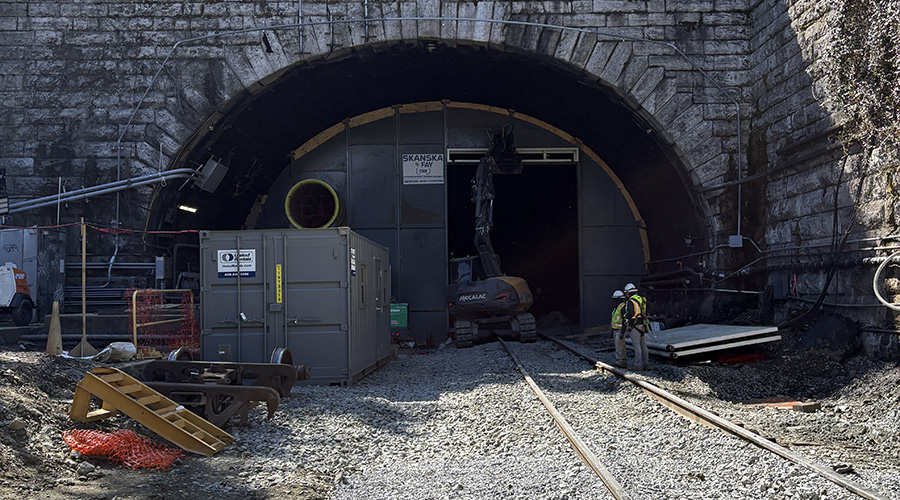CN seeks to build spur in Saskatchewan to serve new BHP potash mine
4/19/2023
By Jeff Stagl, Managing Editor
CN is seeking Canadian Transportation Agency (CTA) approval to build a more than 30-mile spur in Saskatchewan to connect BHP Canada Inc.’s future potash mine to the railroad’s existing mainline.
The line would originate at a point on CN’s Watrous Subdivision and run northward west of Jansen and east of Nokomis to near the mine site. Track and signal work is projected to start in August 2024, pending regulatory approval.
The CTA will approve CN’s construction application if the spur’s location is deemed reasonable, taking into account the requirements for railway operations and services, and the interests of the municipalities affected by the spur. The agency accepted public comments on the project in March.
BHP plans to construct its own rail spur to provide the mine to access to CN and Canadian Pacific, which operates a mainline nearby. Located about 90 miles from Saskatoon, Saskatchewan, the $7.5 billion potash mine will be developed in stages, with the first stage estimated to cost $5.7 billion. The mine will feature a mill and other processing and storage facilities.
 The darker arrows on this map show how CN moves potash produced in Saskatchewan to ports on both of Canada’s coasts as well as to points in the U.S. Midwest. CN
The darker arrows on this map show how CN moves potash produced in Saskatchewan to ports on both of Canada’s coasts as well as to points in the U.S. Midwest. CNIn January, Canada’s Innovation, Science and Economic Development arm announced it would provide $100 million to help BHP develop the mine, which is expected to generate the lowest direct emissions among potash mines in the world. BHP plans to significantly minimize the mine’s carbon footprint and implement technologies to further reduce emissions produced by operations.
The Jansen site will be one of the world’s largest and most sustainable potash mines, according to BHP. Operations are expected to start in late 2026, with the mine projected to produce 4.35 million tons of export potash annually. That figure would represent about 20% of the 22 million tons mined in Canada — the world’s largest potash-producing nation — in 2021.
Customers around the world will use potash from the Jansen mine to produce nutrient-rich fertilizers needed to address a growing global population, agricultural land constraints and evolving diets, according to BHP.
CN plans to initially serve the mine with up to four unit trains per week. Train lengths would vary but are expected to extend up to 177 hopper cars. Under the spur’s current design, trains would reach a maximum speed of 25 mph.
CN currently serves or accesses all the major potash mines in Saskatchewan. The Class I also counts several fertilizer producers in Canada and the United States as customers, and transports various forms of nitrogen and phosphate fertilizers to core agricultural and industrial markets, including ammonia nitrate and urea.
Accessing ports on three coasts, CN provides producers access to fast-growing fertilizer regions in Latin America and Asia. The railroad’s Chicago bypass helps support fertilizer movements to the U.S. corn belt.


